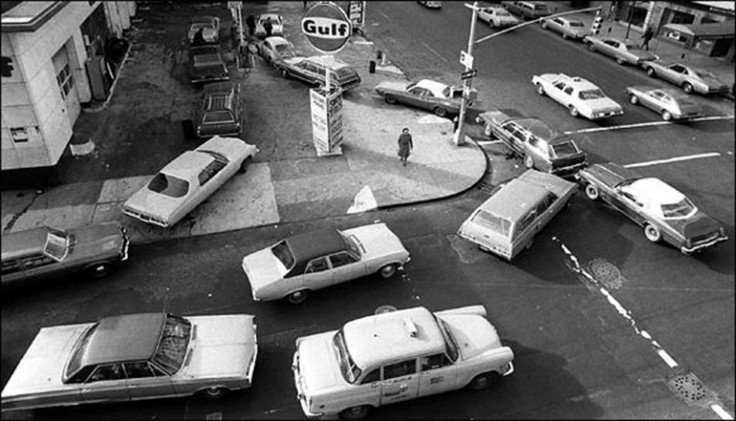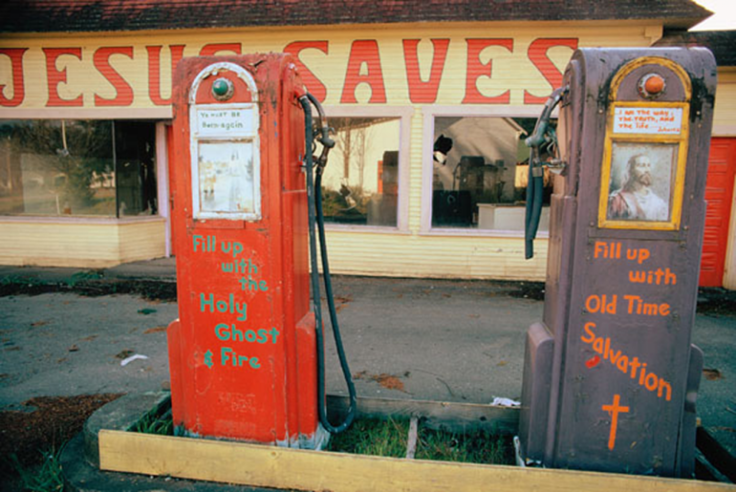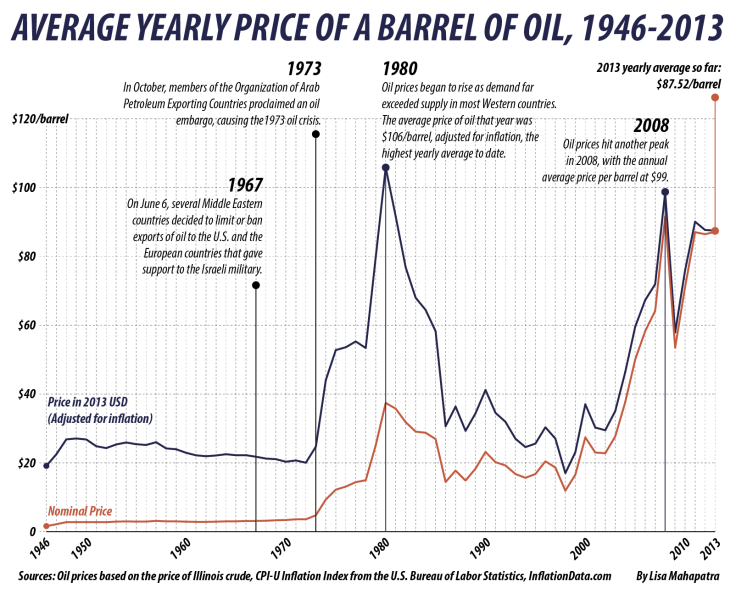Four Decades After The Arab Oil Embargo, The US Outperforms Saudi Arabia; How The 1973 Crisis Changed US Energy Policy And Habits

In the fall of 1973, Buick offered “the man with a family” his choice of a new Century Regal coupe or four-door sedan, either of which, it would later be noted, guzzled gas like there was no tomorrow.
The ad, which ran in the Oct. 22, 1973, edition of Newsweek, didn’t bother to mention the car’s gas mileage, because who cared? (It likely ranged from less than 10 to 15 miles per gallon, depending on the selected drivetrain.)
Within a few short weeks, such details would indeed matter very much. By the end of October, Buick's targeted customer would join millions of Americans waiting in line for gas that was in short supply, watching as something they had long taken for granted -- cheap gas -- evaporated before his eyes.
Here's what took the fun out of wasteful gas consumption: An oil embargo imposed by Arab nation members of the Organization of Petroleum Exporting Countries (OPEC), which used its valuable commodity as a weapon to harm countries supporting Israel in the Yom Kippur War that had begun in early October when Egyptian and Syrian forces staged a surprise attack on Israel in the Suez region and Golan Heights, respectively. OPEC retaliated against the United States and its European allies for their backing of Israel by cutting oil production, limiting exports of crude and raising prices -- in short, forever changing trade and automotive fuel dynamics across the globe.

The resulting oil crisis could not have come at a worse time for beleaguered U.S. President Richard Nixon, who was reeling from the Watergate scandal that would soon lead to his resignation. He had to deal with the conflicting demands of Israel, which needed military supplies to hold off the Arabs, and of Americans, many of whom just wanted inexpensive gasoline and plenty of it.
In warning of the impending oil embargo against the West and Japan, Kuwait’s U.S. ambassador, Salem al-Sabah, told Newsweek, “We will use oil as a means of putting pressure on countries that take a side with Israel. If we have any evidence of any country taking a side there will be an embargo. We’d make sure our oil did not get to that country, either as a refined product or crude.”
Soon after, OPEC went through with this threat, while simultaneously cutting oil production by 5 percent from September 1973 output and warning of continued production reductions in 5 percent increments until the Arab members’ economic and political objectives were met, which included reformulating pricing structures and the withdrawal of support for Israel in the war. OPEC simultaneously announced it would increase the posted price of oil by 70 percent, to $5.11 a barrel, from an average of $1.68 in 1972 (it would rise to $8.54 in 1974).
The effects were immediate and widespread: Long gas lines formed in cities and towns across the U.S. as Americans panicked and created greater demand for a product that was in short supply; gas prices skyrocketed by 40 percent; NASCAR reduced all races by a distance of 10 percent (and canceled the Sebring race in 1974); and gas stations closed between 9 p.m. Saturday night and midnight Sunday, every weekend. Making matters worse, the embargo came at a time of high inflation and a devalued dollar.
Initially, the energy crisis was relegated in the news to the unfolding Watergate saga, highlighted on the cover of the Oct. 22 edition of Newsweek with the headline “The Tape Crisis" -- a reference to secret recordings in which Nixon and his political team allegedly discussed possible illegal activities, such as bugging opponents' offices, undermining FBI investigations, using the IRS to harm enemies and a litany of lesser and greater abuses of power. Elsewhere in the magazine, ads for longer, lower, wider and more powerful Cadillacs, Buicks and other American cars provided a strange counterpoint to the article about the oil crisis buried toward the back. In hindsight, though, it is evident that anxiety was mounting: A Mobil Oil ad warned, “Someday, all the wells in the United States will run dry and die,” though the company added, on a more positive note, that, “Our crews are working 24 hours a day all over the world to find oil.”
At the time, the U.S. imported less than 10 percent of its overall oil mix from the Middle East, but the embargo was a shock to the system and led to an economic downturn that threatened to spark a full-blown recession. Once the full ramifications became apparent, the crisis finally made the cover of Newsweek, on Dec. 3, 1973, with a picture of a gas pump nozzle and the headline, “How Bad A Slump?”
The Arab-Israeli war ended on Oct. 25, 1973, with little change in the Middle East map. That eliminated the reason for the embargo although OPEC sustained the action until March 1974. By then the die was cast. Americans were determined to never again be “held hostage” to oil imports. Citizens reduced lighted Christmas displays, cut back on travel, and became more cognizant of settings on thermostats. U.S. policymakers began to talk in more serious tones about energy independence and the government lowered the legal speed limit to 55 mph on major highways and reduced daytime temperatures in Federal offices to between 65 and 68 degrees.

In the 40 years since the embargo began, automobile gas mileage has become a major selling point -- and has risen steadily higher to numbers that would have been unimaginable in 1973, routinely above 20 miles per gallon and often enough more than 30 mpg. The U.S., meanwhile, has surpassed Saudi Arabia as the top oil and natural gas producer, according to a new report released by the New York-based PIRA Energy Group.
“Compared to 40 years ago, today the United States is in a growing position of strength with respect to the global energy landscape,” Sen. Ron Wyden, D-Ore., chair of the Energy and Natural Resources Committee, told the International Business Times. “Thanks to today’s expanding wealth of energy resources, falling dependence on foreign oil, and the emergence of cleaner and renewable energy sources, we're headed toward a more secure energy future. For the 50th anniversary of the oil embargo, our goal should be not just energy security, but to end dependence on overseas petroleum imports.”
Here's an interactive map of gasoline prices at the pump in 60 countries. Click on any country to see how much gas costs, and what that means for the people who live there:
© Copyright IBTimes 2024. All rights reserved.





















